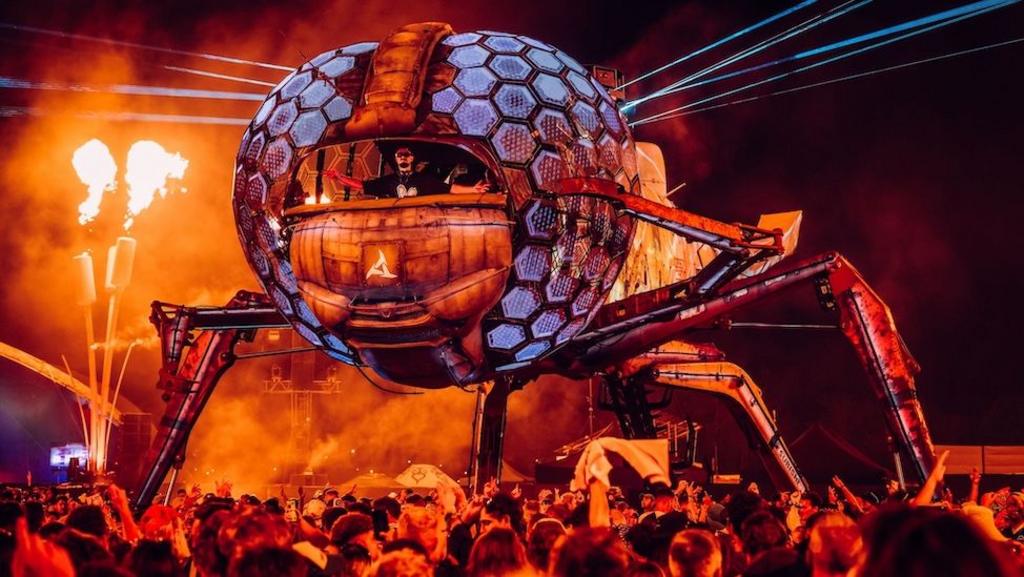After 10 years of navigating the festival, I’ve identified two distinct approaches to mastering Glastonbury’s after-dark experience.
The first involves dedicating a single night to immersive exploration. This strategy demands an extraordinary number of steps, but with sufficient carbohydrate intake and canned cocktails, the resulting 18-hour experience proves worthwhile.
Alternatively, one can adopt a fully nocturnal rhythm for the duration of the festival weekend. This approach necessitates the companionship of like-minded friends willing to emerge from their tents at dinnertime each day.
Considering the demands on my colleagues, I opted for the first approach this weekend, dedicating my Friday night to Glastonbury’s renowned “naughty corner.”
The most effective way to navigate the expansive dance areas is to forgo rigid planning, allowing the evening to unfold organically.
Following Four Tet’s headlining performance at Woodsies, I ventured towards Silver Hayes, Glastonbury’s most recent dance precinct.
Established in 2013, Silver Hayes has since expanded to incorporate two prominent stages: Levels and Lonely Hearts Club.
At the latter, I caught a portion of CamelPhat’s set. The Liverpool duo’s unique brand of tech house attracted a sizable crowd, despite coinciding with headliners on the main stages.
Shortly thereafter, I proceeded to Arcadia, arguably the festival’s most visually arresting installation.
Originally constructed in 2007 and established as a permanent fixture in 2014, Arcadia has garnered international acclaim as the site where some of the world’s leading DJs perform within a colossal spider structure.
Reimagined as a massive dragonfly constructed from a repurposed Royal Navy helicopter, the structure was illuminated by Australian DJ and producer Sonny Fodera, who remarked to the BBC that performing there “was one of the most insane experiences of my life.”
Arcadia is often a priority for first-time Glastonbury attendees, drawn by its lasers and pyrotechnics, which are undeniably compelling for Instagram content.
However, the stage’s sound system has faced criticism for being insufficiently loud for those positioned further away; optimal sound requires proximity to the stage.
Nevertheless, I found the sound quality to be satisfactory even from a considerable distance.
Fodera, 39, a veteran of two previous performances at Worthy Farm, declared this year’s stage “unmatched.”
“The production and the sound system were definitely the best I’ve ever had at a festival,” he added.
Glastonbury’s late-night dance music landscape has undergone a dramatic transformation in the past 25 years, evolving from a single tent in 2000 to numerous dedicated areas.
The South East Corner stands as perhaps the most significant innovation. Established in 2008, its remote location has made the journey itself a celebrated tradition.
By the time I commenced my trek to the area at 1:00 AM, fatigue was setting in.
Fortunately, I secured a companion for the expedition, which began with a brief stop at the Cabaret tent, where, to my surprise, comedians James Acaster and Nish Kumar were performing a back-to-back DJ set.
This served as a prelude to the sensory overload that is Shangri-La.
Shangri-La is among Glastonbury’s most renowned after-dark destinations, largely due to its elaborate installations that often address political or environmental themes.
The area, which began its development over 17 years ago, has undergone numerous iterations, with a complete redesign for this year’s festival to create a more open space.
Everywhere one looks, there is something unusual and captivating enough to merit attention, from a mattress sprouting plant life to a telephone line connecting callers to nature.
The stages have also been renovated, a development that excites dance vocalist Katy B.
She told the BBC: “I love dance music, and I’m definitely someone who loves Glastonbury at night. I’m playing Shangri-La main stage at four in the morning, which is going to be intense.”
Katy contends that the area’s expansion reflects the organizers’ recognition of the “demand for dance music.” She recalls attending the festival when “the dance section was literally just two tents.”
The experience could be likened to visiting a theme park. Indeed, a section of the South East Corner is styled as a fairground, complete with techno music emanating from every direction.
Part of the appeal of Glastonbury’s late-night scene lies in its inclusivity. While exploring Block 9, I observed a glitter-covered woman enjoying house music alongside a man in a Liverpool F.C. jersey.
As extreme exhaustion began to take hold later in the night, the experience began to resemble a dream.
We noted the seemingly endless queue for Glastonbury’s LGBT hotspot, NYC Downlow, where singer Lorde was reportedly spending the evening.
A similarly long queue formed for Temple, the festival’s drum and bass venue.
The nights here conclude at 6:00 AM, and with so much to experience, it is often challenging to cease the pursuit of the perfect set.
As we made our separate ways back to camp, feet aching and heads throbbing, people were still entering the fields.
With a fallow year approaching, I realized this might be my last visit to the naughty corner for some time and made a detour to the Greenpeace stage on the way home, where a disco night was in progress.
After all, if one cannot indulge in a final, solitary dance to Sister Sledge, what is the point?
The festival said chants from the punk duo which called for death to Israel’s military “crossed a line”.
A look behind the scenes at what it takes to bring Glastonbury Festival to people across the world.
The Bradford African Festival of Arts will include a community performance on the theme of unity.
The US rock star is planning to bring his latest tour to the UK in October and November.
The Irish-language rap trio play to a packed crowd, despite calls for their performance to be banned.

